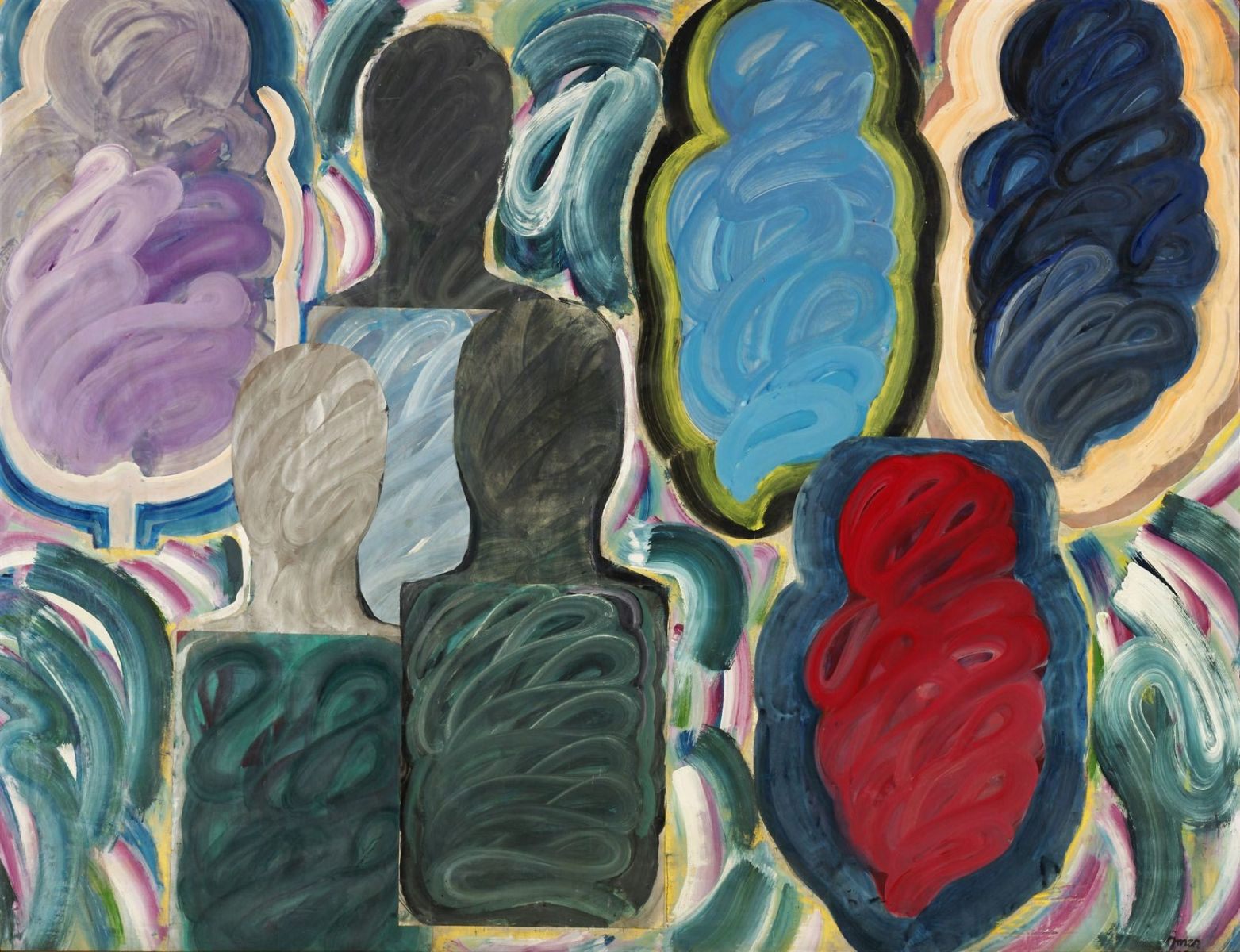- Open Today: 10.00–18.00
- Ticket
- Shop
- Membership
- TR EN

Ömer Uluç, 1931-2010
3 Men, 4 Women, Visitors, 1989
After graduating from Robert College in 1953, Ömer Uluç went to the United States for four years to study engineering and then art. He was a member of the Attic Painters (Tavanarası Ressamları) group founded by Nuri İyem in 1953. He lived in Paris and London in 1965, in the United States and Mexico between 1972 and 1973, in Nigeria from 1973 to 1977, and between Paris and Istanbul from 1983 onward. Enriched by this great variety of geographies, Uluç used his keen sense of irony and humor to create an album of living beings comprising monsters, supernatural creatures, and humans. He continually strived to keep alive modern art’s spirit of exploration and discovery. Right from the beginning of his career, the artist created a problematic of image and meaning all his own—for instance bodies and creatures with serpentine coils and spirals, and helices accentuated by rhythmic brushstrokes.
Starting in the 1960s, Uluç produced figures using circular and spiral brushstrokes. These bundle-like characters, which were genderless in the beginning, acquired a more female and/or mother-and-child appearance in later works. In the 1980s Uluç began adding movement to the backgrounds of his paintings using vigorous brushwork and explored three-dimensionality in compositions combining painting and sculpture. The many questions and problems at the basis of his paintings encompass almost every conceivable issue: the woes of prehistoric humans, the brazenness of an island crow, the privacy of sacred family ties, the absurdity of classical literature, the dark, metallic colors of Byzantine icons, the whiff of death, similarities between humans and animals, illogical discussions about nothingness, momentous turning points in the history of art.
The concept of movement underlying Uluç’s view of life manifests in his paintings through his spiral brushstrokes. While the artist made room for transformations in his artistic career by incorporating collage, he added yet another layer to his adventure that began with painting when his figures acquired volume. Afterward, movement made itself visible, at first using ropes. His various compositions involving thick nautical ropes have an inherent dynamism owing to the nature of the material. He later switched from rope to rubber and plastic tubing, which take the place of aluminum, polyester, and Plexiglas, thus adding dimension and embodiment to his painted figures.
Painting
Mixed media on canvas
Istanbul Museum of Modern Art Collection
Eczacıbaşı Group Donation